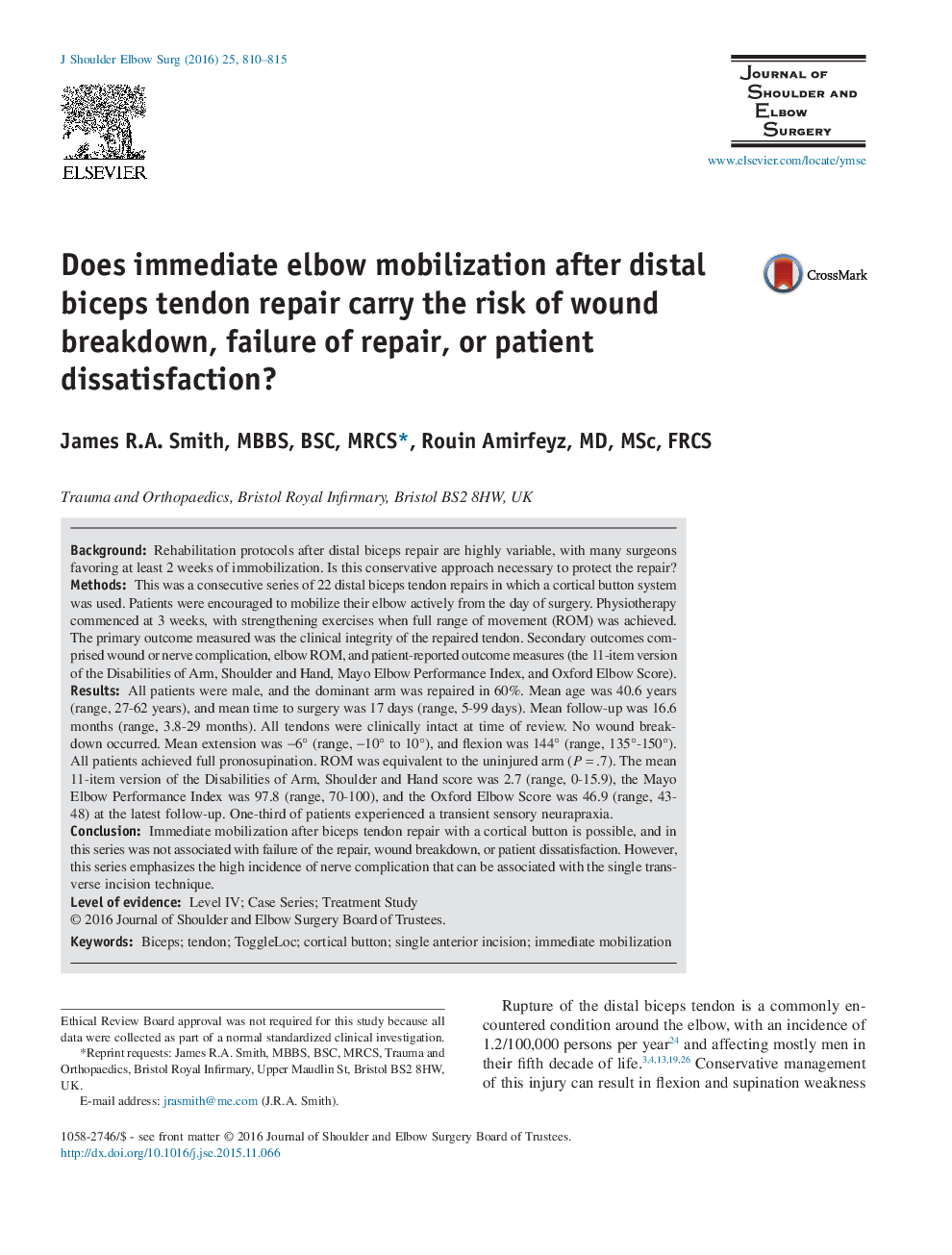| Article ID | Journal | Published Year | Pages | File Type |
|---|---|---|---|---|
| 4072946 | Journal of Shoulder and Elbow Surgery | 2016 | 6 Pages |
BackgroundRehabilitation protocols after distal biceps repair are highly variable, with many surgeons favoring at least 2 weeks of immobilization. Is this conservative approach necessary to protect the repair?MethodsThis was a consecutive series of 22 distal biceps tendon repairs in which a cortical button system was used. Patients were encouraged to mobilize their elbow actively from the day of surgery. Physiotherapy commenced at 3 weeks, with strengthening exercises when full range of movement (ROM) was achieved. The primary outcome measured was the clinical integrity of the repaired tendon. Secondary outcomes comprised wound or nerve complication, elbow ROM, and patient-reported outcome measures (the 11-item version of the Disabilities of Arm, Shoulder and Hand, Mayo Elbow Performance Index, and Oxford Elbow Score).ResultsAll patients were male, and the dominant arm was repaired in 60%. Mean age was 40.6 years (range, 27-62 years), and mean time to surgery was 17 days (range, 5-99 days). Mean follow-up was 16.6 months (range, 3.8-29 months). All tendons were clinically intact at time of review. No wound breakdown occurred. Mean extension was −6° (range, −10° to 10°), and flexion was 144° (range, 135°-150°). All patients achieved full pronosupination. ROM was equivalent to the uninjured arm (P = .7). The mean 11-item version of the Disabilities of Arm, Shoulder and Hand score was 2.7 (range, 0-15.9), the Mayo Elbow Performance Index was 97.8 (range, 70-100), and the Oxford Elbow Score was 46.9 (range, 43-48) at the latest follow-up. One-third of patients experienced a transient sensory neurapraxia.ConclusionImmediate mobilization after biceps tendon repair with a cortical button is possible, and in this series was not associated with failure of the repair, wound breakdown, or patient dissatisfaction. However, this series emphasizes the high incidence of nerve complication that can be associated with the single transverse incision technique.
